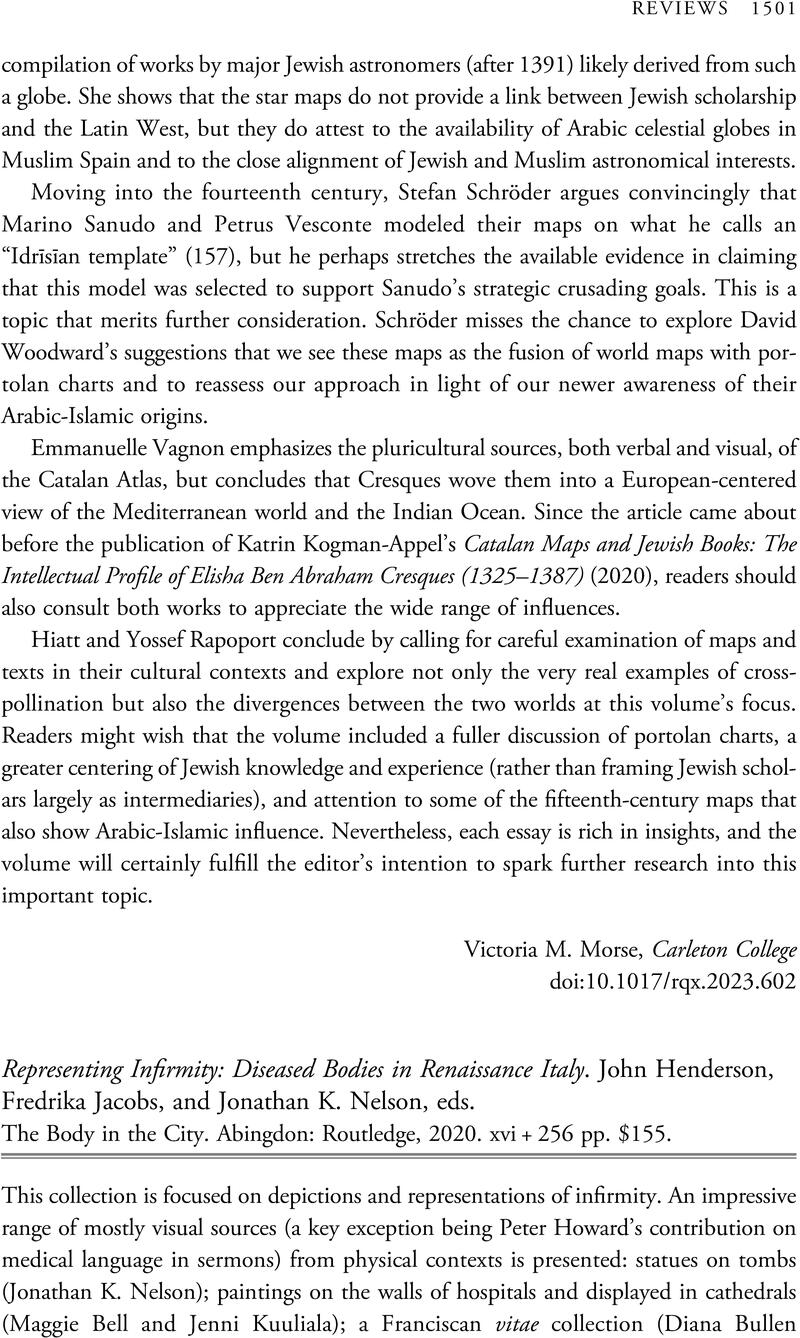No CrossRef data available.
Article contents
Representing Infirmity: Diseased Bodies in Renaissance Italy. John Henderson, Fredrika Jacobs, and Jonathan K. Nelson, eds. The Body in the City. Abingdon: Routledge, 2020. xvi + 256 pp. $155.
Review products
Representing Infirmity: Diseased Bodies in Renaissance Italy. John Henderson, Fredrika Jacobs, and Jonathan K. Nelson, eds. The Body in the City. Abingdon: Routledge, 2020. xvi + 256 pp. $155.
Published online by Cambridge University Press: 24 January 2024
Abstract
An abstract is not available for this content so a preview has been provided. Please use the Get access link above for information on how to access this content.

- Type
- Review
- Information
- Copyright
- Copyright © The Author(s), 2024. Published by Cambridge University Press on behalf of the Renaissance Society of America



